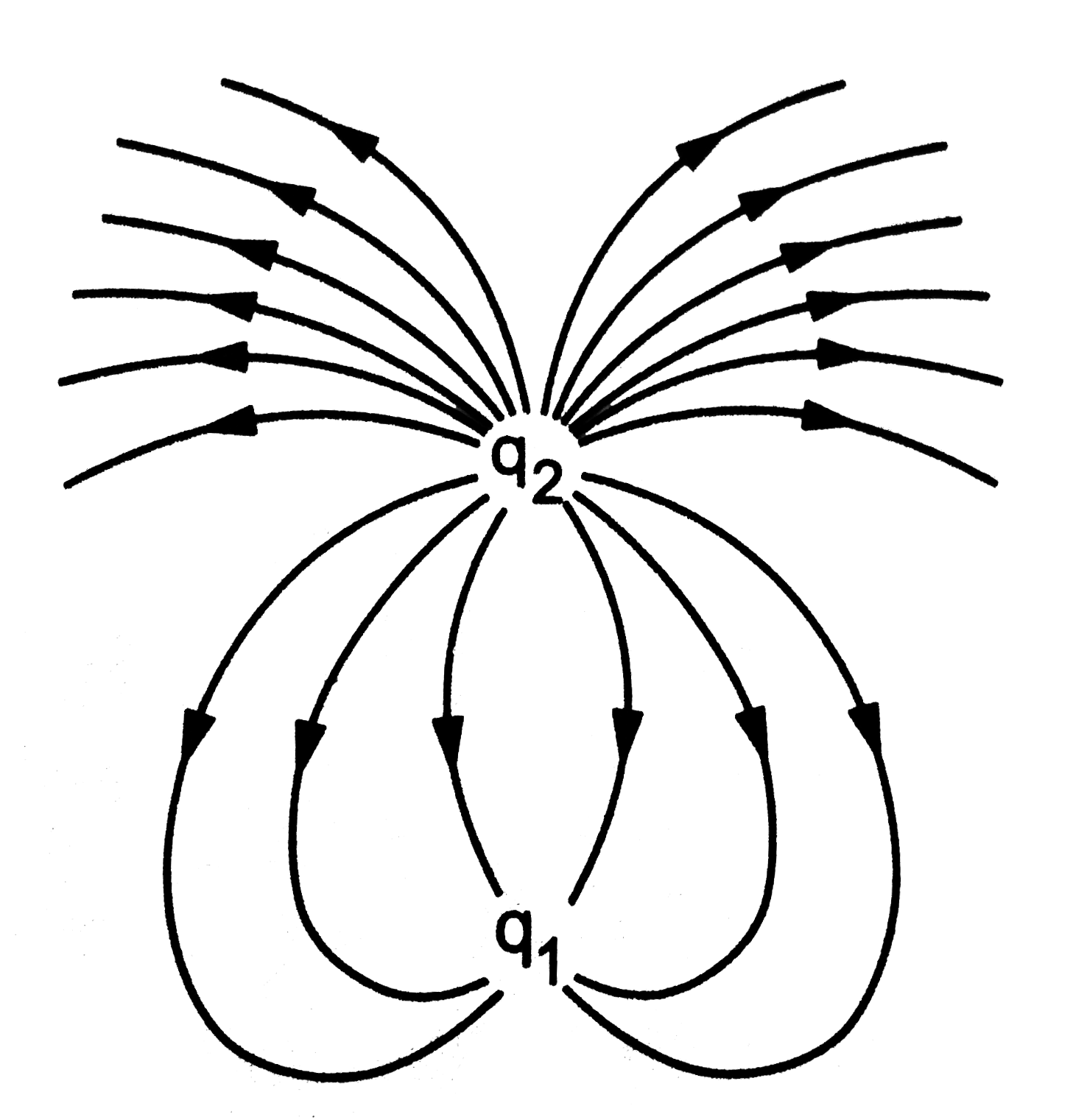The field lines for two point charges shown in fig.

(i) Is the field uniform?
(ii) Determine the ratio qA/qB.
(iii) What are the sign of qA and qB ?
(iv) Apart from infinity, where is the neutral point?
(v) If qA and qBare separated by a distance 10(√2−1) cm, find the position of neutral point.
(vi) where will the lines meet which are coming from A and are not meeting at qB?
(vii) Will a positive charge follow the line of force if free to move?
Video Solution
Text Solution
(i)No.
(ii) Number of lines coming from or coming to a charge is proportional to magnitudes of charge so
qAqB=126=2
(iii) qA is positive and qB is negative
(iv) C is the other neuteral point
(v) For neutral point EA=EB
14πε0qA(1+x)2=14πε0qBx2

(1+xx)2=qAqB=2⇒x=10cm
|
Topper's Solved these Questions
- ELECTROSTATICS AND GAUSS LAWBOOK - NARAYNACHAPTER - ELECTROSTATICS AND GAUSS LAWEXERCISE - C.U.Q
133 Videos
- ELECTROSTATICS AND GAUSS LAWBOOK - NARAYNACHAPTER - ELECTROSTATICS AND GAUSS LAWEXERCISE - Level 1(C.W)
24 Videos
- ELECTROSTATIC POTENTIAL AND CAPACITANCEBOOK - NARAYNACHAPTER - ELECTROSTATIC POTENTIAL AND CAPACITANCEEXERCISE - ADDITIONAL PROBLEMS
14 Videos
- EXPERIMENTAL PHYSICSBOOK - NARAYNACHAPTER - EXPERIMENTAL PHYSICSEXERCISE - Comprehension type
6 Videos
Similar Questions
Knowledge Check
The positions of two point charges q1 and q2 are →r1 and →r2 , respectively. Find the position of the point where the net field is zero due to thses charges.
A→r1√q1+→r2√q2√q1+√q2B→r1√q2+→r2√q1√q1+√q2C→r1√q2+→r2√q1√q1+q2D→r1√q1+→r2√q2√q1+q2Two positive point charges q1=16μC and q2=4μC are separated in vacuum by a distance of 3.0m. Find the point on the line between the charges where the net electric field is zero.-
A2m from q1B1m from q1C2m from q2D0.5m from q1Two charge Q1=18μC and Q2=−2μC are separted by a distance R, and Q1 is on the left off Q2. The distance of the point where the net electric field is zero is
Abetween Q1 and Q2Bleft of Q1atR/2Cright of Q2 at RDright of Q2 at R/2
Consider the situation shown in (figure) what are the signs of q1 and q2 ? If the lines are drawn in proportion to the charge, what is the ratio q1q2 ?

View SolutionFigure shows the electirc field lines for two point charges separated by a distance. What are the signs of q1andq2 ? Can you determine the ratio q1∣q2 ?

View SolutionTwo point charges Q and −Q/4 are separated by a distance X. Then
 .
.
View SolutionTwo point charges q1=+2C and q2=−1C are separated by a distance d. The position on the line joining the two charges where a third charge q=+1C will be in equilibrium is at a distance
View SolutionThree charges +q, +q, +2q are arranged as shown in figure. What is the field at point P (center of side AC)

View Solution

